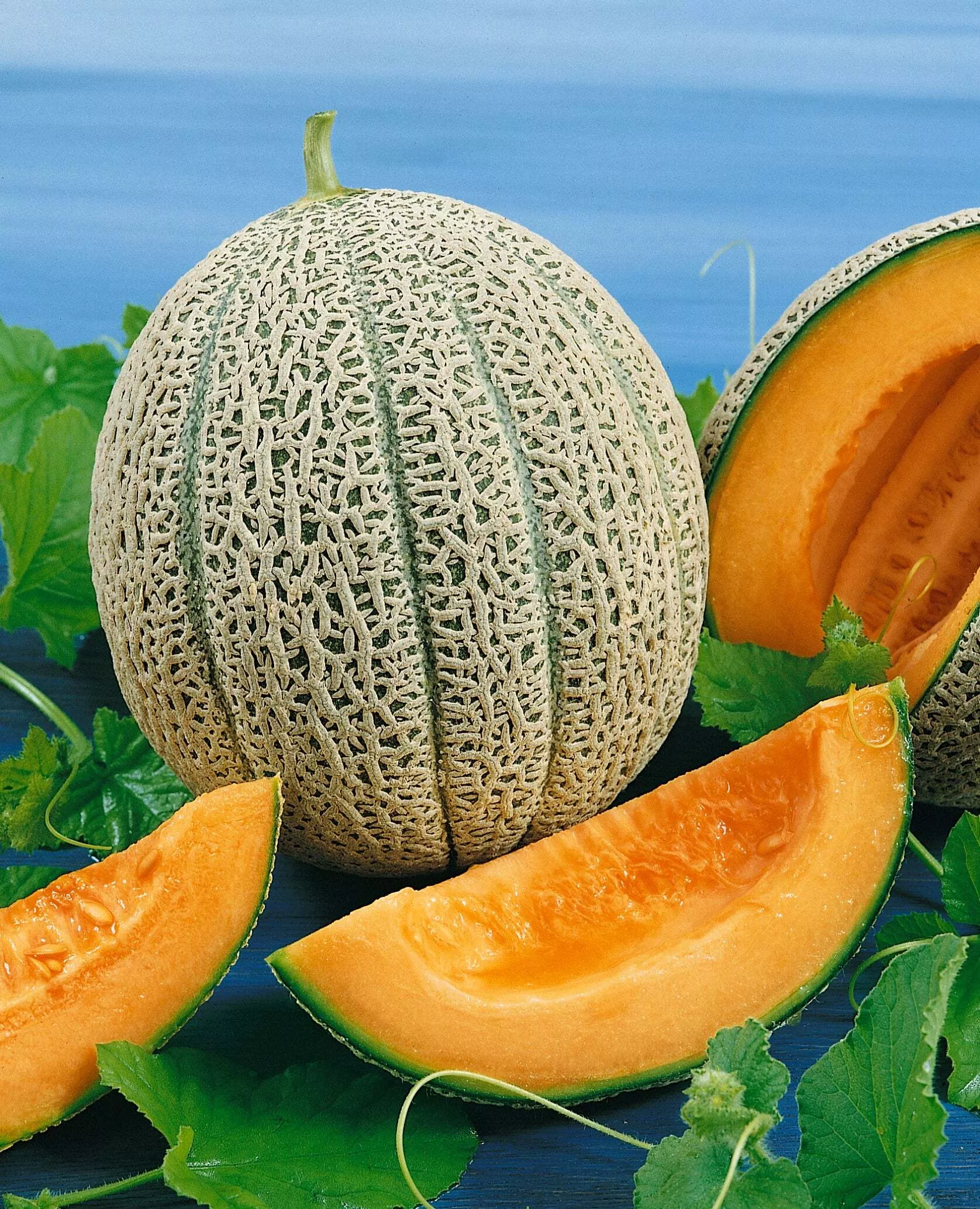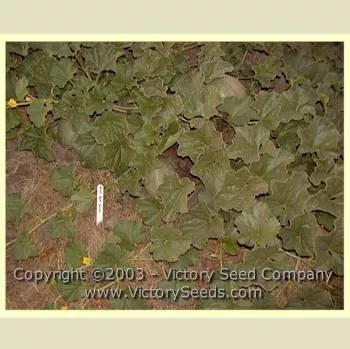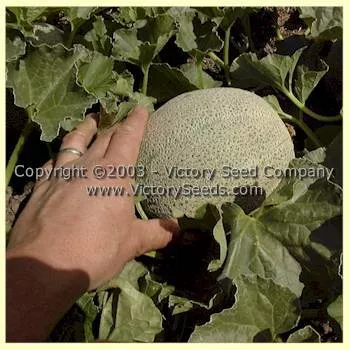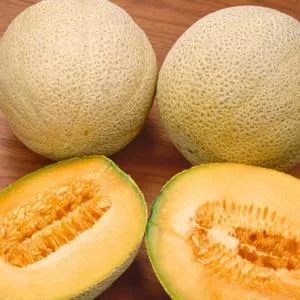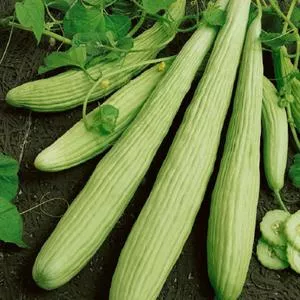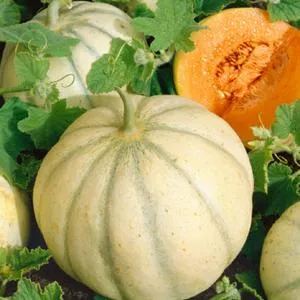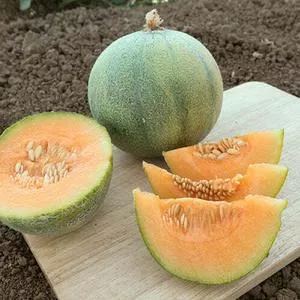


Hale's Best Jumbo Muskmelon
Cucumis melo var. inodorus
Price: $3.45
SKU: 3250031Choose a variant:
85 days - The fruit are early large, oval-shaped fruit with heavy netting and thick, salmon-orange flesh. They average three and one-half to five pounds each. Introduced in 1924.[1]
"The discovery of 'Hale's Best' was due to the alert observations of I. D. Hale of California. Mr. Hale at one time lived at Rocky Ford (Colorado) but moved to California and was a representative of the C. B. Weaver Co. of Chicago, one of the largest cantaloupe distributors operating in the Imperial Valley."[2]
When J. Bolgiano introduced 'Hale's Best' in their 1927 seed catalog, they dedicated a whole page of prime space espousing its virtues. They wrote:
"The discovery of 'Hale's Best' was due to the alert observations of I. D. Hale of California. Mr. Hale at one time lived at Rocky Ford (Colorado) but moved to California and was a representative of the C. B. Weaver Co. of Chicago, one of the largest cantaloupe distributors operating in the Imperial Valley."[2]
When J. Bolgiano introduced 'Hale's Best' in their 1927 seed catalog, they dedicated a whole page of prime space espousing its virtues. They wrote:
"This melon was selected by a large melon grower in California from the ordinary strains of Rocky Ford he was growing. It has much the same shape, appearance, netting and carrying qualities, flesh and flavor of the other salmon tinted Rocky Ford Melons.
A recent report by the California Crop Reporting Service regarding cantaloupes grown in that state, gives the following figures. In 1924 there were less than 300 acres of Hale's Best, in 1925 about 5,487 acres and in 1926 there were 16,875 acres, this in face of a very small increase in the total acreage in melons in the state. The same increase was apparent at Rocky Ford, New Mexico, Arizona and all other Western states where melons are grown in large acreages.
It is obvious that the sudden popularity must have a reason, which is its extreme earliness combined with its general good eating and shipping qualities."[3]
A recent report by the California Crop Reporting Service regarding cantaloupes grown in that state, gives the following figures. In 1924 there were less than 300 acres of Hale's Best, in 1925 about 5,487 acres and in 1926 there were 16,875 acres, this in face of a very small increase in the total acreage in melons in the state. The same increase was apparent at Rocky Ford, New Mexico, Arizona and all other Western states where melons are grown in large acreages.
It is obvious that the sudden popularity must have a reason, which is its extreme earliness combined with its general good eating and shipping qualities."[3]
Genetic Classification: Open Pollinated
Planting Instructions:
The seeds can be directly sown in spring after the soil has warmed or started indoors three to four weeks before your last expected frost.
Indoors, plant two to three seeds per pot, ½ inch deep, thinning to best plant. Do not disturb roots. Outdoors, plant six to eight seeds, ½ inch deep, in hills spaced four feet apart. Transplant or thin to three plants per hill.
Young plants are cold sensitive and some cover protection at nights may be required. Mulch or cultivate to control weeds.
Sources:
- "U. S. D. A. Yearbook of Agriculture, 1937," pages 216-217.
- "The Vegetables of New York: The Cucurbits," New York AES, 1937, pages 73-74.
- "Garden Guide," J. Bolgiano & Co., Baltimore, Maryland, 1927, page 3.
Customer Reviews:
Do you have experience with this one? 📝 📣 Write a review!
★★★★★ Solid Preformer
By Tracy (Bryan, TX) on October 3, 2024
By Tracy (Bryan, TX) on October 3, 2024
This variety is recommended by the Master Gardeners for my area. Holds up to Texas heat. It is always good to understand what variety grows well in your area.
★★★☆☆ Excellent germination, can't take the heat
By Hope (Daytona Beach, FL) on June 25, 2023
By Hope (Daytona Beach, FL) on June 25, 2023
I got great germination from these seeds , but none have survived the Florida heat and sandy soul y even with appropriate feeding, frequent watering, mulching, soil amendments and partially shaded aspect. If I try muskmelon again, I may try with ollas and see if that helps.

